Family
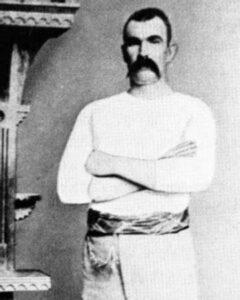
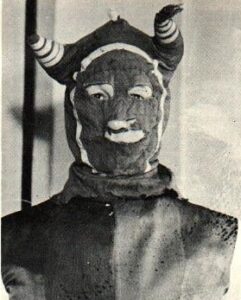 Vigilantism has probably always existed, at least as long as laws have existed. It is the epitome of taking the law into your own hands. One vigilante group called themselves “The Bald Knobbers.” They were a group of vigilantes in the Ozark region of southwest Missouri, from 1885 to 1889. The group got its name from the grassy bald knob summits of the nearby Ozark Mountains. The hill where they first met, Snapp’s Bald, is located just north of Kirbyville, Missouri. The Bald Knobbers were a strange looking bunch. They were known to wear black horned hoods with white outlines of faces painted on them. It was a distinction that evolved during the rapid growth of the group into neighboring counties from its Taney County origins.
Vigilantism has probably always existed, at least as long as laws have existed. It is the epitome of taking the law into your own hands. One vigilante group called themselves “The Bald Knobbers.” They were a group of vigilantes in the Ozark region of southwest Missouri, from 1885 to 1889. The group got its name from the grassy bald knob summits of the nearby Ozark Mountains. The hill where they first met, Snapp’s Bald, is located just north of Kirbyville, Missouri. The Bald Knobbers were a strange looking bunch. They were known to wear black horned hoods with white outlines of faces painted on them. It was a distinction that evolved during the rapid growth of the group into neighboring counties from its Taney County origins.
The Bald Knobbers had mostly sided with the Union in the Civil War, and they were opposed by the Anti-Bald Knobbers, who for the most part had sided with the Confederates. After the Civil War, the economy in Southwest Missouri was failing. Taxes were high. Lawlessness, disorder, and a general breakdown of society prevailed, especially in small towns and rural regions. The rising crime rate was the reason the group was formed. The area was in a deplorable state when Nathaniel N Kinney settled in Taney County, Missouri, in 1883. Outlaws and renegades ruled the land. Most of them were bushwhackers and guerillas that had rampaged through Missouri during the Civil War. Because law enforcement was at a minimum, the outlaws had free reign. To protect their own, clans elected and controlled the local sheriff, whose authority was to subpoena jury panels. If outlaws or their relatives didn’t sit on the juries, they bribed those who did. As many as forty murders occurred in Taney County between 1865 and 1885, but due to all the corruption, not a single suspect was convicted.
Nat Kinney was about to change all that. Kinney feared no man. He stood six feet six and weighed more than 300 pounds. On September 22, 1883, after yet another murder Kinney began to consider forming a law-and-order league patterned after other vigilante groups that were popular during that time. The final straw came when a biased jury acquitted yet another murderer, Kinney called together 12 county leaders who met in secret. They decided to form a committee to fight the lawlessness and elect officials who would enforce the law, and the Bald Knobbers group was born. The Bald Knobbers began with “good intentions,” but soon, the violence displayed by the vigilante group gained national attention, becoming more publicized than the actual fight for law and order.
It seemed that a lot of people wanted to get better control of the lawless situation in the area, so the organization grew rapidly, and by the time of their meeting on April 5, 1885, two hundred people showed up at a meeting on Snapp’s Bald, a hilltop south of Forsyth, Missouri. Kinney was an excellent speaker and was unanimously elected as their leader. Kinney accepted and swore his followers to secrecy. Then, he instructed them to recruit new members to carry out the group’s ultimate goal of taking control of a wildly out of control situation. Within days, they were ready. The Bald Knobbers began to show their force when over 100 of them broke open the door of the Taney County jail and kidnapped brothers, Frank and Tubal Taylor. The Taylor brothers were well known criminals in the area and were known for their viciousness. They were jailed for wounding a storekeeper during an argument over credit for a pair of boots. Unfortunately for the Taylor brothers, the local store owner, John Dickenson, happened to be a Bald Knobber. The group broke the two out of jail. Then the mob hauled the brothers south of Forsyth and hanged them. They were not going to have a corrupt trial this time.
Some of the Bald Knobbers felt that the groups own violence was appalling, and so they dropped out of the group after the attack. Nevertheless, the Bald Knobbers continued to grow, and before long, the group had between 500 and 1,000 members. Kinney’s group began to further “correct” the lawlessness by making night rides to scare such “lowlifes” as drunks, gamblers, or “loose” women into changing their ways. They also frightened wife beaters, couples “living in sin,” and men who failed to support their families. They had really gone overboard in their “correcting” of the people. The group actually took on the feel of a dictator, even trying to rule over those whose “crimes” were hurting no one. At this point, the Bald Knobbers split into two factions…those who followed or supported Kinney and those who thought him a tyrant and wished he was dead.
The violence brought about by the group increased as they flogged or branded suspected thieves, arsonists, and robbers. Their punishments no longer fit the crimes, as they would hang or beat a man to death for assault, disturbing the peace, or destroying property. Then things went from bad to worse when, emboldened by their power, some Bald Knobbers began to use their position for greedy and selfish purposes as they went after men who owed them money or owned land they wanted. They “settled” feuds over fence lines and property deeds, whipped men for disrupting services in their churches, or for supporting the wrong candidate in the election. They were quickly becoming the dictators of the area.
However, the harshest punishment was saved for those who spoke out against them. Some victims who resisted the Bald Knobbers simply disappeared. Later, several turned up in the woods, beaten to death. Those who lived to tell claimed that Kinney’s followers killed more than thirty men and at least four women. It is thought, however, that a better estimate, thought to be more realistic places the number between fifteen and eighteen. No matter, because the killing of anyone without a trial, unless it is in self-defense or the defense of another, is morally wrong. I understand how people can feel that justice isn’t being carried out, but when we take the law into our own hands, we are no different than the criminals we are trying to punish.
As the Bald Knobbers grew in numbers and their violent acts escalated, resentment grew, a a small group formed to fight against the Bald Knobbers. They called themselves the Anti-Bald Knobbers. The vigilantes were able to block every effort to mitigate the situation. The courthouse was burned down when a judge called for a state audit to ferret corruption among the county’s officeholders. Finally, twenty Bald Knobbers were arrested, 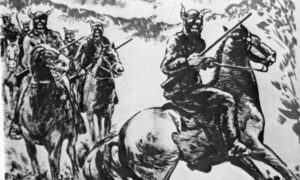
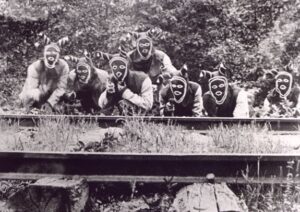 but most received light sentences ranging from fines to short prison terms. However, four were sentenced to death. On August 20, 1888, Nat Kinney was shot and killed by Billy Miles, a member of the Anti-Bald Knobbers, in a planned assassination. Though Miles was tried for Kinney’s murder, he was found not guilty based on self-defense and so ended a brutal reign of vigilante terror.
but most received light sentences ranging from fines to short prison terms. However, four were sentenced to death. On August 20, 1888, Nat Kinney was shot and killed by Billy Miles, a member of the Anti-Bald Knobbers, in a planned assassination. Though Miles was tried for Kinney’s murder, he was found not guilty based on self-defense and so ended a brutal reign of vigilante terror.
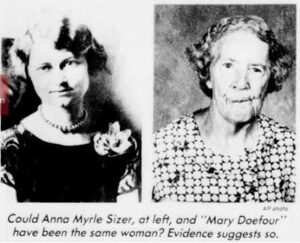 On March 2, 1978, an elderly woman known as Mary Doefour passed away in Queenwood East Nursing Home, but Mary Doefour wasn’t her real name. In fact, no one knew who she was or when she was born. No one knew of a single friend or relative to inform of her passing either. Doefour had been found wandering along a roadside in Northern Illinois, about 50 years earlier. She was disoriented and beaten. She’d been sexually assaulted and was later found to be pregnant. When asked who she was, she couldn’t remember her name. She later remembered that she had been a schoolteacher. That was all she ever remembered. When Rick Baker, a writer for the Bloomington Pantagraph got the call to write an obituary for an unknown woman, he was at first annoyed, but later he was intrigued. He had to know who she was.
On March 2, 1978, an elderly woman known as Mary Doefour passed away in Queenwood East Nursing Home, but Mary Doefour wasn’t her real name. In fact, no one knew who she was or when she was born. No one knew of a single friend or relative to inform of her passing either. Doefour had been found wandering along a roadside in Northern Illinois, about 50 years earlier. She was disoriented and beaten. She’d been sexually assaulted and was later found to be pregnant. When asked who she was, she couldn’t remember her name. She later remembered that she had been a schoolteacher. That was all she ever remembered. When Rick Baker, a writer for the Bloomington Pantagraph got the call to write an obituary for an unknown woman, he was at first annoyed, but later he was intrigued. He had to know who she was.
Mary was not mentally unstable. Nevertheless, she was placed in a state hospital for the criminally insane, and no one tried very hard to uncover her identity. Her child was most likely put in an orphanage. On multiple occasions, she reportedly tried to argue that she did not belong in the hospital, but each attempt left her medicated. She was living a nightmare from which she could not awaken. Doefour was periodically subjected to electric shock therapy for unknown reasons, which likely damaged her mind. After 10 years of this abuse, she was transferred to a state mental hospital in Bartonville, where her mental and physical state slowly degenerated. Sadly, the proper treatment that might have restored her memory to her had been denied her, and she remained a mere shadow of her former self.
For 30 years, Doefour was in the Bartonville mental hospital without visitors. In 1972, she was sent to a nursing home in El Paso and then to one in Morton. For more than four decades, no one could determine who she was, but then no on really tried either. Baker was different, and after hearing the vague details of her story in 1978, he began investigating who she might have been. He ran a 14-page story in the Bloomington Pantagraph about Doefour, hoping that someone would recognize her story. When no one came forward with any ideas about her identity, Baker ran another story in the Peoria Journal Star, which also ran in a few other notable papers. From the story’s printing, a clue arose. A woman wrote in stating that she remembered a teacher who had disappeared in Iowa.
Baker followed up on this lead by calling a school in Mount Vernon, Iowa, where he eventually learned that about 50 years earlier, a teacher had gone missing by the name of Anna Myrle Sizer. After further investigation, he discovered Sizer had a brother, Harold Sizer, who was still alive. From him, Baker learned that Sizer was last seen getting off a train in Marion, Iowa. A later suspected sighting of Sizer placed her wandering, dazed, on a highway between Cedar Rapids, Ohio, and Chicago, Illinois. The more he learned about Anna Myrle Sizer, the more Baker became convinced she was Mary Doefour, whose name was given as a way of keeping track of unknowns. The women were all given the name of Mary Doe, with the addition of a number to distinguish each from the others. Mary Doefour was the fourth such unknown woman. 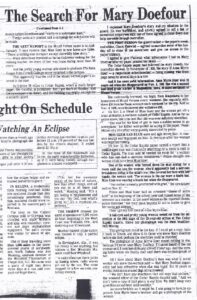
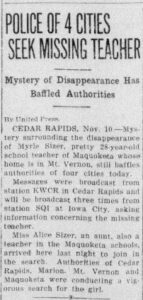
Baker showed a photograph of Sizer as a young woman to people who knew Doefour, many believed them to be one and the same, still, this did not promote a deeper investigation. Baker tried to get Sizer’s brother to look into the case further, by going through the court to gain access to Doefour’s medical records and hopefully prove she was his sister. But Harold wouldn’t agree. His family had already made peace with Sizer’s disappearance, concluding that she had died long ago. And the possibility that she’d been trapped in a mental hospital for 50 years wasn’t one that Harold could accept. Baker eventually had to close his investigation without ever knowing for certain if he had found the real Mary Doefour and solved the mystery. Nevertheless, I believe from the pictures he showed people that he did indeed find Anna Sizer…may she finally rest in peace.

 My grandniece, Manuela Ortiz is a super sweet girl, who married into our family when she married my grandnephew, James Renville. They are so perfect for each other, because they are opposites who complement each other so well. Manuela is very outgoing, and she has opened up some new vistas for James. He has always loved to travel, and since Manuela immigrated from Columbia, they now have family in two countries. They went down to Columbia last year, and plan to go again in June. James loves her family, and they love him. Manuela has shown him all the sights of her home country, and they had a wonderful time. They are excited to be going again.
My grandniece, Manuela Ortiz is a super sweet girl, who married into our family when she married my grandnephew, James Renville. They are so perfect for each other, because they are opposites who complement each other so well. Manuela is very outgoing, and she has opened up some new vistas for James. He has always loved to travel, and since Manuela immigrated from Columbia, they now have family in two countries. They went down to Columbia last year, and plan to go again in June. James loves her family, and they love him. Manuela has shown him all the sights of her home country, and they had a wonderful time. They are excited to be going again.
Last year, Manuela was given a promotion to Counseling Manager at the Wyoming Housing Network. She came 
 to this country on a work visa to learn English, which she planned to use to improve her work status in Columbia, but things just worked out for the better here, because her language skills were very much valued at her new place of employment. They realized that she was going to be a great asset to the company, and they wanted to make sure she was happy. They succeeded!! Manuela has been making her department a better place for the counseling of first-time home buyers, and they are very happy with her work. She is a great manager and an easy person to work with.
to this country on a work visa to learn English, which she planned to use to improve her work status in Columbia, but things just worked out for the better here, because her language skills were very much valued at her new place of employment. They realized that she was going to be a great asset to the company, and they wanted to make sure she was happy. They succeeded!! Manuela has been making her department a better place for the counseling of first-time home buyers, and they are very happy with her work. She is a great manager and an easy person to work with.
Manuela and James also became first-time home buyers, when they had the opportunity to buy James’ childhood home from his mom. They did quite a bit of updating on the home before they moved in and have plans for more updates over the coming year. They are going to be replacing some of the old flooring, and they plan to hire a landscaping team to come in and do some work on the back yard. The house was a great house 
 before, but I’m sure it is even more beautiful now, and since she is a first-time housing counselor, they already knew what to expect as first-time buyers.
before, but I’m sure it is even more beautiful now, and since she is a first-time housing counselor, they already knew what to expect as first-time buyers.
While they are very settled these days, their love of travel is still very much intact. They are planning to take a little trip down to Saratoga, Wyoming to relax and enjoy the beautiful country there. They are very active, and the great outdoors is calling their names. I can relate. I love to hike and such too, so the idea of getting out in nature is very appealing. I know they will have a wonderful time, and I’m sure this will be just one of many future trips for them. Today is Manuela’s birthday. Happy birthday Manuela!! Have a great day!! We love you!!

 New England is famous for its stone structures. In fact, in the 1930s, it was estimated that New England had 250,000 miles of stone walls. That number has since been doubled, but walls are not the only stone structures in New England. Since the 193s, people began to wonder about the region’s hundreds of stone chambers. Of course, many people thought they might have some cultish or mysterious uses, and I suppose they might have been used for those things at one point or another, but that was really never their initial planned usage. The stone structures were also called huts, caves, beehives, dolmens, and root cellars. They have long provoked questions about their age and cultural origins.
New England is famous for its stone structures. In fact, in the 1930s, it was estimated that New England had 250,000 miles of stone walls. That number has since been doubled, but walls are not the only stone structures in New England. Since the 193s, people began to wonder about the region’s hundreds of stone chambers. Of course, many people thought they might have some cultish or mysterious uses, and I suppose they might have been used for those things at one point or another, but that was really never their initial planned usage. The stone structures were also called huts, caves, beehives, dolmens, and root cellars. They have long provoked questions about their age and cultural origins.
Unlike the stone walls of New England, there are only about 800 stone–built chambers scattered across the New England States. These chambers are so unique, that their design and form have been found nowhere else in North America. The chambers are generally circular and rectangular forms that range from 15-30 feet long, are about 10 feet wide, and have a 10 feet tall central chamber. The “beehive” is the most elaborate of the structures. They were built in a conical shape and sometimes feature smoke holes for ventilation, as well as shelves and benches incorporated into the walls. The chambers that have bees stood the test of time, were built into hillsides, while others were built freestanding. Amazingly, the chambers are expertly constructed with fitted masonry stone and capped with megalithic slabs. Some of the chambers are surrounded by cairns, standing stones, enclosures, ceremonial walls, pedestal boulders, and balanced rocks, which could suggest either a lodging or some ceremonial place.
Although the structures do exhibit some common features, their construction details, nevertheless vary widely. 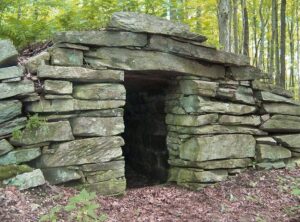
 They also differ from other colonial structures including stone burial vaults, charcoal and lime kilns, potash burners, and iron furnaces. These chambers have been found in New York, Massachusetts, New Hampshire, Pennsylvania, New Jersey, Rhode Island, Vermont, Maine, Ohio, Virginia, West Virginia, and Kentucky. While some people like to think that the chambers were built for some sinister use, many historians and archeologists believe these structures were built by early colonists as root cellars, or perhaps by Native Americans before them, others believe that some of these chambers are ancient, built by European travelers during the Bronze Age. Most people believe that the structures were built by early colonists for use as root cellars, settlers’ quarters, smokehouses, shepherds’ shelters, animal pens, whiskey storage facilities, and hunting or trapping enclosures.
They also differ from other colonial structures including stone burial vaults, charcoal and lime kilns, potash burners, and iron furnaces. These chambers have been found in New York, Massachusetts, New Hampshire, Pennsylvania, New Jersey, Rhode Island, Vermont, Maine, Ohio, Virginia, West Virginia, and Kentucky. While some people like to think that the chambers were built for some sinister use, many historians and archeologists believe these structures were built by early colonists as root cellars, or perhaps by Native Americans before them, others believe that some of these chambers are ancient, built by European travelers during the Bronze Age. Most people believe that the structures were built by early colonists for use as root cellars, settlers’ quarters, smokehouses, shepherds’ shelters, animal pens, whiskey storage facilities, and hunting or trapping enclosures.
The only part that doesn’t fit that train of thought is that early records of New England colonists make mention of stone chambers preexisting the settlement the land and they were also described in colonial writings as the existence of strange “Indian forts.” Nor does it explain that sometimes the age of the chamber could be authenticated by trees that predated settlement, that passageways were often too low and narrow to wheel a cart into, and the chambers’ having soil floors that would rot vegetables. Logically, it didn’t make sense that the practical-minded colonial farmers would create such complex and well-crafted megalithic “root cellars” for simple use of their fruits and vegetables. Especially ones like these. Also, while the colonial homes and other buildings have long since vanished, these stone chambers still exist, suggesting that they were far more elaborately built. Other researchers have presented the facts that the chambers were far too large for use for 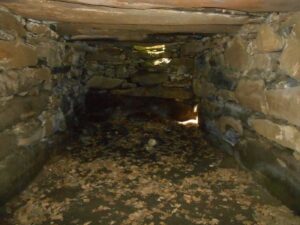
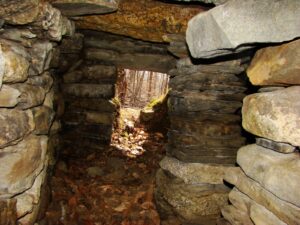 food storage and most of the colonists had built root cellars underneath or near their homes instead of in the upland areas where most of them are found. In addition, why would these people have spent so much time and effort quarrying great amounts of stones and hauling them to these sites, when trees were abundant? So, the mystery remains, and speculation continues regarding the mysterious stone structures.
food storage and most of the colonists had built root cellars underneath or near their homes instead of in the upland areas where most of them are found. In addition, why would these people have spent so much time and effort quarrying great amounts of stones and hauling them to these sites, when trees were abundant? So, the mystery remains, and speculation continues regarding the mysterious stone structures.
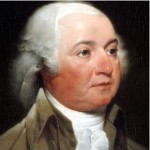
 Every politician has his trusted advisors. Often these are high ranking officials who have proven their vast political knowledge and proven that they can be trusted to keep their part of government participation on the straight and narrow for their president. However, not every advisor is a politician or someone in business, or even someone who works at all. Some seek the advice of their wives, but few to the degree of Congressman John Adams, who would later be our second president. John Adams and his wife, Abigail had an interesting political relationship. She was truly his closest confidant. When he needed advice, she was his “go-to girl” in every case. Often, Abigail would be at home maintaining the family farm in Braintree, Massachusetts while her husband was serving on the Continental Congress in Philadelphia. On March 7, 1777, Continental Congressman John Adams wrote three letters to and received two letters from his wife, Abigail.
Every politician has his trusted advisors. Often these are high ranking officials who have proven their vast political knowledge and proven that they can be trusted to keep their part of government participation on the straight and narrow for their president. However, not every advisor is a politician or someone in business, or even someone who works at all. Some seek the advice of their wives, but few to the degree of Congressman John Adams, who would later be our second president. John Adams and his wife, Abigail had an interesting political relationship. She was truly his closest confidant. When he needed advice, she was his “go-to girl” in every case. Often, Abigail would be at home maintaining the family farm in Braintree, Massachusetts while her husband was serving on the Continental Congress in Philadelphia. On March 7, 1777, Continental Congressman John Adams wrote three letters to and received two letters from his wife, Abigail.
The Adams’ correspondence was truly remarkable. Their total letters during his political career numbered 1,160 letters in total, and they covered topics ranging from politics and military strategy to household economy and 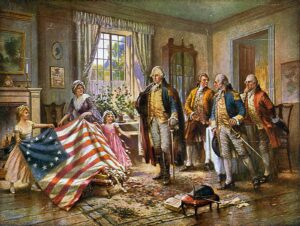 family health. For many of the years of Adams’ political career their lives were literally lived in letters. Their mutual respect and adoration showed that even in an age when women were unable to vote, there were nonetheless marriages in which wives and husbands were true intellectual and emotional equals, and the marriage between John and Abigail Adams was one of those.
family health. For many of the years of Adams’ political career their lives were literally lived in letters. Their mutual respect and adoration showed that even in an age when women were unable to vote, there were nonetheless marriages in which wives and husbands were true intellectual and emotional equals, and the marriage between John and Abigail Adams was one of those.
Normally, Congress met in Philadelphia, but in mid-December 1776 Congress decided to move to Baltimore to escape capture by the advancing British. The time in Baltimore was frustrating for the Congress. There were complaints that “the town was exceedingly expensive, and exceedingly dirty, that at times members could make their way to the assembly hall only on horseback, through deep mud.” Throughout the session there was inadequate representation from the various colonies. In those days congressmen came to meetings if they felt they could make it, but excuses for not going were often made too. Even with the shortage of representatives, Samuel Adams declared in the earlier part of the session, “We have done more important business in three weeks than we had done, and I believe should have done, at Philadelphia, in six months.” The congressmen also managed to appoint a committee of five to obtain foreign assistance.
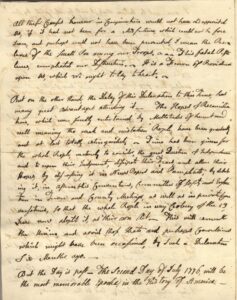
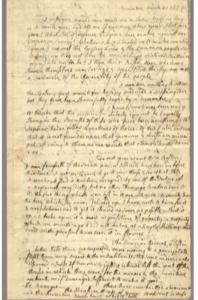 On March 7th, 1777, John drafted his second letter to Abigail. In it he declared that Philadelphia had lost its vibrancy during Congress’ removal to Baltimore. “This City is a dull Place, in Comparason [sic] of what it was. More than one half the Inhabitants have removed to the Country, as it was their Wisdom to do—the Remainder are chiefly Quakers as dull as Beetles. From these neither good is to be expected nor Evil to be apprehended. They are a kind of neutral Tribe, or the Race of the insipids.” While the Adams’ couple did what they had to do to serve their country, I’m sure the years of service were hard on the couple, but never on their marriage. Their love was genuine and forever. Their letters may have been mostly formal and businesslike, but I think that if you read between the lines their letter told so much more about the couple they were.
On March 7th, 1777, John drafted his second letter to Abigail. In it he declared that Philadelphia had lost its vibrancy during Congress’ removal to Baltimore. “This City is a dull Place, in Comparason [sic] of what it was. More than one half the Inhabitants have removed to the Country, as it was their Wisdom to do—the Remainder are chiefly Quakers as dull as Beetles. From these neither good is to be expected nor Evil to be apprehended. They are a kind of neutral Tribe, or the Race of the insipids.” While the Adams’ couple did what they had to do to serve their country, I’m sure the years of service were hard on the couple, but never on their marriage. Their love was genuine and forever. Their letters may have been mostly formal and businesslike, but I think that if you read between the lines their letter told so much more about the couple they were.
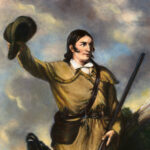
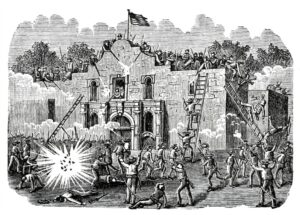 In our history, the United States has been involved in a number of iconic battles. Some turned out very well, while others, including the Battle for The Alamo. The Battle for the Alamo actually started on February 23, 1836. The next thirteen days were filled with heavy fighting. Just days earlier, before the fighting started, the Alamo’s defenders brought their wives, children, servants, and slaves with them into the mission for safety after Santa Anna’s troops occupied San Antonio. I’m sure they knew that their “safety” in the mission would be challenged, but there was no place else that could offer a better chance at survival.
In our history, the United States has been involved in a number of iconic battles. Some turned out very well, while others, including the Battle for The Alamo. The Battle for the Alamo actually started on February 23, 1836. The next thirteen days were filled with heavy fighting. Just days earlier, before the fighting started, the Alamo’s defenders brought their wives, children, servants, and slaves with them into the mission for safety after Santa Anna’s troops occupied San Antonio. I’m sure they knew that their “safety” in the mission would be challenged, but there was no place else that could offer a better chance at survival.
On March 6, 1836, after 13 days of intermittent fighting near the Alamo, the actual Battle of the Alamo came to a gruesome end. On February 23, Mexican General Antonio Lopez de Santa Anna had ordered a siege of the Alamo Mission. The rebel Texas forces had occupied the mission since December, including their leaders, Colonels William B Travis and James Bowie, and the legendary frontiersman Davy Crockett…all of whom were 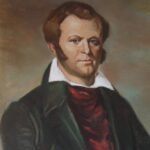 killed in the battle. An army of over 1,000 Mexican soldiers began descending on the makeshift fort and setting up artillery. The battle that finally took place on March 6th, lasted about 90 minutes, and it was absolutely brutal capping off a pivotal moment in the Texas Revolution. The battle included a hail of bullets and in the end, even hand to hand combat, and it was gruesome.
killed in the battle. An army of over 1,000 Mexican soldiers began descending on the makeshift fort and setting up artillery. The battle that finally took place on March 6th, lasted about 90 minutes, and it was absolutely brutal capping off a pivotal moment in the Texas Revolution. The battle included a hail of bullets and in the end, even hand to hand combat, and it was gruesome.
The Mexican army had no compassion, even on the women and children. Those 15 or so people who survived the attack, did so by pretending to be dead, or hiding in small rooms that could appear empty. The mission really had no lighting, so a small, windowless room could possibly hide someone. A few of the survivors later gave their account of the battle. Enrique Esparza, who was the son of Alamo defender Gregorio Esparza, said that Mexican troops fired a hail of bullets into the room where he was hiding alongside his mother and three siblings. Somehow, they missed the five people hiding there. Juana Navarro Alsbury, who was the adopted sister of Bowie’s wife and the niece of Texan leader José Antonio Navarro, survived the battle with her young son and her sister, Gertrudis. Juana’s husband, Dr Horace Alsbury had left the fort in late February. It is thought that he went in search of a safer place for his family.

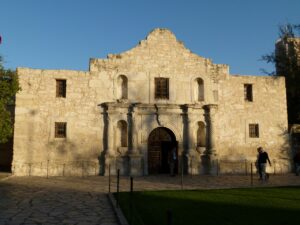 In the end, Mexican forces were victorious in recapturing the fort. After the battle, the Mexican army marched east. Meanwhile, Sam Houston, commander of the Texas forces, had been building and developing his army in Harris County. Their rallying cry became “Remember the Alamo!” which they used as an urgent reminder to avenge their earlier defeat. On April 21, Texas and Mexico fought again at the Battle of San Jacinto. Texas was victorious this time, and won independence from Mexico, bringing the Texas Revolution to an end.
In the end, Mexican forces were victorious in recapturing the fort. After the battle, the Mexican army marched east. Meanwhile, Sam Houston, commander of the Texas forces, had been building and developing his army in Harris County. Their rallying cry became “Remember the Alamo!” which they used as an urgent reminder to avenge their earlier defeat. On April 21, Texas and Mexico fought again at the Battle of San Jacinto. Texas was victorious this time, and won independence from Mexico, bringing the Texas Revolution to an end.

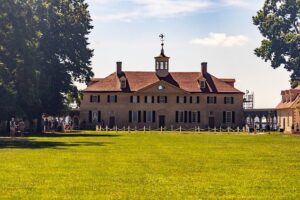 When a president leaves office these days, they leave with a lifetime pension, but until 1958, when a president left office, he was not afforded any compensation. That meant that after their time in office, they had to go back to earning a living on their own again. I understand that our presidents have a really big job, but the longest they can be in that office is eight years, so a lifelong pension doesn’t totally make sense to me, but that is clearly another story.
When a president leaves office these days, they leave with a lifetime pension, but until 1958, when a president left office, he was not afforded any compensation. That meant that after their time in office, they had to go back to earning a living on their own again. I understand that our presidents have a really big job, but the longest they can be in that office is eight years, so a lifelong pension doesn’t totally make sense to me, but that is clearly another story.
After his term in office, our very first president, George Washington, was approached by James Anderson in 1797, who urged him to open a whiskey distillery. Anderson, who had experience distilling grain in Scotland and Virginia, told Washington that Mount Vernon’s crops, combined with the large merchant gristmill and the abundant water supply, would make a whiskey distillery a very profitable venture, So, after his term, Washington opened that whiskey distillery. By 1799, his distillery was the largest in the country, producing 11,000 gallons of un-aged whiskey!
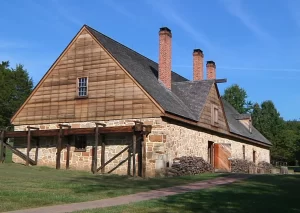
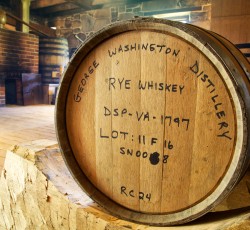
By the 1810 census, distilleries were quite commonplace in the United States. In fact, there were more than 3,600 operating in Virginia alone, but George Washington’s distillery was one of the largest in the nation at that time, measuring 75 x 30 feet, or 2,250 square feet as opposed to the average being 800 square feet.
George Washington’s whiskey was not bottled, branded, or barrel-aged like most whiskeys of that time. Instead, his was put in an uncharred barrel, which was usually 30 gallons in size. It was then sent into Alexandria, where it was consumed right away as an unaged whiskey. This process brought a hefty stream of cash to Mount Vernon. Not only did George Washington earn his own living, but he also paid taxes on his income. He left office and became a normal everyday citizen again.
George Washington’s Mount Vernon still produces limited batches of both aged and unaged whiskey today. These days, however, the whiskey is placed in branded bottles. It is, nevertheless, produced in the traditional 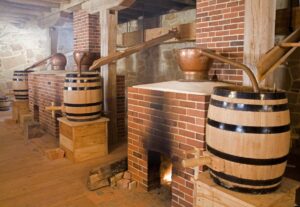
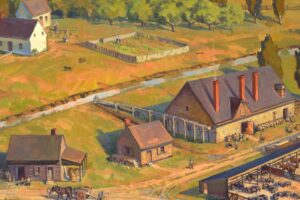 18th-century way as it was before, in George Washington’s reconstructed distillery, proving yet again that if a president was resourceful, he is unlikely to need a lifelong pension for eight years of work. I have a lot of respect for such a resourceful man like George Washington was. He didn’t expect the American people to carry his lifestyle on their backs for the rest of his life.
18th-century way as it was before, in George Washington’s reconstructed distillery, proving yet again that if a president was resourceful, he is unlikely to need a lifelong pension for eight years of work. I have a lot of respect for such a resourceful man like George Washington was. He didn’t expect the American people to carry his lifestyle on their backs for the rest of his life.

 My sister-in-law, Rachel Schulenberg was born just three days after my husband and I were married. It seems strange that my sister-in-law was about the age of my own children, but then my husband’s family was spread out in years, and my brother-in-law, Ron was only seven years old when I married his brother. Rachel would have been 50 years old today, had not her life been cut short by a stroke on January 19, 2021. Rachel was a sweet Christian woman who loved the Lord and loved telling people about Jesus. She worked at a church in Powell for a number of years and was known to
My sister-in-law, Rachel Schulenberg was born just three days after my husband and I were married. It seems strange that my sister-in-law was about the age of my own children, but then my husband’s family was spread out in years, and my brother-in-law, Ron was only seven years old when I married his brother. Rachel would have been 50 years old today, had not her life been cut short by a stroke on January 19, 2021. Rachel was a sweet Christian woman who loved the Lord and loved telling people about Jesus. She worked at a church in Powell for a number of years and was known to  pray with anyone who needed prayer. She was a great servant of the Lord and loved by everyone who knew her.
pray with anyone who needed prayer. She was a great servant of the Lord and loved by everyone who knew her.
Rachel was mom to three children, Cassie Franklin, Riley Birky, and Tucker Schulenberg, who was adopted by her husband, Ron Schulenberg (my brother-in-law), when he was 11 years old. She was a great mom, and her children were so very blessed. Rachel was also a grandmother to Lucas and Zoey and they were among her greatest treasures. Today she would also have Ryder and Alicen, as well as bonus grandson, Jace. Rachel would have loved having all these grandbabies. I wish she could have known the new ones and the future grandbabies. She would have loved having lots of grandbabies.
Rachel was only 45 years old when she passed away, so it’s coming up on five years now. I am always amazed at how fast the years following a loss just fly by. Before you know it, your loved one has been gone five, ten, fifteen years, and beyond, and with each passing year, you just continue to miss them. It is especially hard for 
 the children of the one who has passed away. My heart aches for Cassie, Riley, and Tucker; and for the grandchildren too, especially Lucas and Zoey, who had the opportunity to know their grandma, and therefore to miss her very much. For them her loss is a heavy one. Today would have been Rachel’s 50th birthday. Happy birthday in Heaven, Rachel. We love and miss you very much.
the children of the one who has passed away. My heart aches for Cassie, Riley, and Tucker; and for the grandchildren too, especially Lucas and Zoey, who had the opportunity to know their grandma, and therefore to miss her very much. For them her loss is a heavy one. Today would have been Rachel’s 50th birthday. Happy birthday in Heaven, Rachel. We love and miss you very much.
 A comedian…not someone you would expect to be a world record holder, exactly. Nevertheless, Tim FitzHigham, an English comedian, author, artist, is also, a world record holder. His feats are not necessarily things anyone would think of doing, or would bother to do, for that matter. Still, he found things that were unusual…maybe because the more unusual the feat, the more memorable the record would be. His unique feats include paddling a paper boat (yes…a paper boat) down 160 miles of the River Thames, rowing a bathtub across the English Channel, and inflating the world’s largest man-inflated balloon. These records seem crazy to most people, but then I guess that without crazy feats of daring, The Guiness Book of World Records wouldn’t even exist.
A comedian…not someone you would expect to be a world record holder, exactly. Nevertheless, Tim FitzHigham, an English comedian, author, artist, is also, a world record holder. His feats are not necessarily things anyone would think of doing, or would bother to do, for that matter. Still, he found things that were unusual…maybe because the more unusual the feat, the more memorable the record would be. His unique feats include paddling a paper boat (yes…a paper boat) down 160 miles of the River Thames, rowing a bathtub across the English Channel, and inflating the world’s largest man-inflated balloon. These records seem crazy to most people, but then I guess that without crazy feats of daring, The Guiness Book of World Records wouldn’t even exist.
FitzHigham’s comedian days began when he started telling funny stories in a rum shop in the West Indies, while working as a pig and nutmeg farmer. He performed at the Edinburgh Festival Fringe with James Cary and Jonny Saunders in “Infinite Number of Monkeys – Sketch Comedy of Hypotheticals” in the UK in 1999, where he was nominated for the Perrier Comedy Award (now the Edinburgh Comedy Award) for best newcomer.
 The first of his world records was achieved in 2003, when he paddled the paper boat down 160 miles of the River Thames in order to raise money for Comic Relief. He set himself a goal of raising £500 for the charity. The international attention the stunt received resulted in thousands of pounds in donations. His boat, named the Lillibet is now in the collection of the National Maritime Museum Cornwall. The record, for a boat, constructed out of brown paper and inflated animal bladders, had stood for 383 years, having been set in 1619 by John Taylor, a Jacobean poet and River Thames Waterman. Somehow, I wondered is FitzHigham had been the first to even attempt it, but that would make no real sense.
The first of his world records was achieved in 2003, when he paddled the paper boat down 160 miles of the River Thames in order to raise money for Comic Relief. He set himself a goal of raising £500 for the charity. The international attention the stunt received resulted in thousands of pounds in donations. His boat, named the Lillibet is now in the collection of the National Maritime Museum Cornwall. The record, for a boat, constructed out of brown paper and inflated animal bladders, had stood for 383 years, having been set in 1619 by John Taylor, a Jacobean poet and River Thames Waterman. Somehow, I wondered is FitzHigham had been the first to even attempt it, but that would make no real sense.
The paper boat feat was quite interesting, but in the tame water of the river, it might have been more feasible. So FitzHigham decided to try something new…crossing the English Channel in a bathtub. Now that had to be a funny thing to see. In this one, he was the first person to try this. His first attempt was in 2004 for Sport Relief, when he tried to row from France to Tower Bridge, London in a bathtub made by Thomas Crapper and Company Ltd, named “Lilibet II”, after the childhood nickname of Queen Elizabeth II. This did not go perfectly, however. A  storm on July 14, 2004, consisting of Force 6 winds resulted in the attempt failing and bathtub being damaged. In 2005, FitzHigham made a second attempt, this time for Comic Relief, and successfully crossed. He later wrote about the experience in his first book, “In the Bath,” later retitled “All at Sea,” and the story was turned into a show that was performed at the Fringe. In honor of the event, Thomas Crapper and Company Ltd made a special lavatory named after him. It is only the second commemorative lavatory in history, the other being made for Queen Victoria’s jubilee. Now that had to be a “great honor,” don’t you think?
storm on July 14, 2004, consisting of Force 6 winds resulted in the attempt failing and bathtub being damaged. In 2005, FitzHigham made a second attempt, this time for Comic Relief, and successfully crossed. He later wrote about the experience in his first book, “In the Bath,” later retitled “All at Sea,” and the story was turned into a show that was performed at the Fringe. In honor of the event, Thomas Crapper and Company Ltd made a special lavatory named after him. It is only the second commemorative lavatory in history, the other being made for Queen Victoria’s jubilee. Now that had to be a “great honor,” don’t you think?
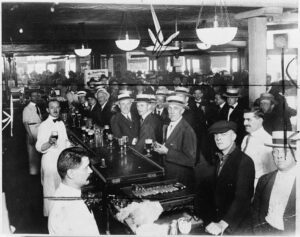 From 1920 to 1929, the consumption of alcohol was outlawed in the United States. The Eighteenth Amendment went into effect in 1920, banning the production, importation, and sale of alcoholic beverages in the United States. That amendment immediately produced a whole new group of criminals…those who would not comply with the new law that they felt was unconstitutional. Whether it was or whether it wasn’t, made no difference. They would not comply. Alcohol went “underground” in more ways than one.
From 1920 to 1929, the consumption of alcohol was outlawed in the United States. The Eighteenth Amendment went into effect in 1920, banning the production, importation, and sale of alcoholic beverages in the United States. That amendment immediately produced a whole new group of criminals…those who would not comply with the new law that they felt was unconstitutional. Whether it was or whether it wasn’t, made no difference. They would not comply. Alcohol went “underground” in more ways than one.
From 1920 to 1929, the Eighteenth Amendment was the law of the land concerning alcohol. Then on March 2, 1929, the Jones Act was signed into law by President Calvin Coolidge. It was effectively the last gasp of Prohibition. The Jones Act strengthened the federal penalties for the bootlegging of alcohol. This, the last act, caused the 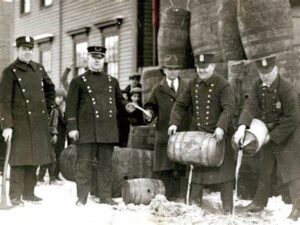 country to reject Prohibition within five years, and to repeal the Eighteenth Amendment. Prohibition was never particularly popular across the nation and when the people slowly realized that it had other ramifications, it rapidly fell by the wayside. The biggest problem with Prohibition was that it didn’t stop the public’s demand for alcohol. Oh, consumption did drop some, but it remained substantial, nevertheless, and in order to fill this now criminal demand, an entire criminal infrastructure was created virtually overnight.
country to reject Prohibition within five years, and to repeal the Eighteenth Amendment. Prohibition was never particularly popular across the nation and when the people slowly realized that it had other ramifications, it rapidly fell by the wayside. The biggest problem with Prohibition was that it didn’t stop the public’s demand for alcohol. Oh, consumption did drop some, but it remained substantial, nevertheless, and in order to fill this now criminal demand, an entire criminal infrastructure was created virtually overnight.
Of course, alcohol was now more expensive, and it brought in enormous amounts of money. Illegal trafficking was highly profitable and helped established organized crime. Crime syndicates dominated the major cities. 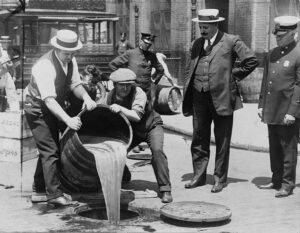 Bribery was running rampant, fueled by those who could afford to bribe officials throughout the criminal justice system. Law enforcement became corrupt, and the federal government became a major player in policing and prosecuting law breakers for the first time.
Bribery was running rampant, fueled by those who could afford to bribe officials throughout the criminal justice system. Law enforcement became corrupt, and the federal government became a major player in policing and prosecuting law breakers for the first time.
Prohibition did nothing to really stop alcohol consumption but rather caused a major breakdown in the social fabric because of its effect on the national psyche. With so many of the people brazenly ignoring the law, an atmosphere of cynicism and hypocrisy was established. Finally repealed the Eighteenth Amendment and Prohibition were widely viewed as a total failure. All that effectively ended with the Jones Act on March 2, 1929.

